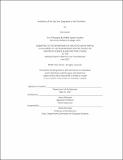| dc.contributor.advisor | James Wescoat. | en_US |
| dc.contributor.author | Fischer, Rio (Rio Garrett) | en_US |
| dc.contributor.other | Massachusetts Institute of Technology. Department of Architecture. | en_US |
| dc.coverage.spatial | a-ii--- | en_US |
| dc.date.accessioned | 2017-09-15T15:39:09Z | |
| dc.date.available | 2017-09-15T15:39:09Z | |
| dc.date.copyright | 2017 | en_US |
| dc.date.issued | 2017 | en_US |
| dc.identifier.uri | http://hdl.handle.net/1721.1/111550 | |
| dc.description | Thesis: S.M. in Architecture Studies, Massachusetts Institute of Technology, Department of Architecture, 2017. | en_US |
| dc.description | Cataloged from PDF version of thesis. | en_US |
| dc.description | Includes bibliographical references (pages 76-79). | en_US |
| dc.description.abstract | This thesis examines the Qur'anic epigraphic program of the Taj Mahal. Following the 1989 Begley & Desai book Taj Mahal: on Illustrated Tomb, the flourish of scholarship that would expectedly follow a complete epigraphical catalog never arrived. Despite being well-known and universally cherished as indicated by the Taj Mahal's recognition as a UNESCO world heritage monument and as one of the New 7 Wonders of the World, there is insufficient research directed towards the inscription program specifically. In order to focus the scope of the project, I employ phenomenological methodology, using a typical visit to approach the most salient, prominent inscriptions. I argue that the epigraphic program operates on three distinct, hierarchical registers: aesthetic, symbolic, and then denotative. Furthermore, I argue that the inscriptions hint towards a preferred way to approach the site. The thesis argues that the primary concern of the calligraphic design on the Taj Mahal is aesthetics. This study finds that letter forms and overall design of the script contribute to a presentation of the Qur'an as visually balanced and demonstrates that this balance was the primary design consideration. Furthermore, the thesis considers the calligraphic aesthetics at multiple scales and shows that aesthetic considerations overlap at various distances and vantages. Finally the thesis questions the strict separation of aesthetics from symbolic reading offering alternative interpretations involving a connection between symbolic meaning and aesthetics. | en_US |
| dc.description.statementofresponsibility | by Rio Fischer. | en_US |
| dc.format.extent | 79 pages | en_US |
| dc.language.iso | eng | en_US |
| dc.publisher | Massachusetts Institute of Technology | en_US |
| dc.rights | MIT theses are protected by copyright. They may be viewed, downloaded, or printed from this source but further reproduction or distribution in any format is prohibited without written permission. | en_US |
| dc.rights.uri | http://dspace.mit.edu/handle/1721.1/7582 | en_US |
| dc.subject | Architecture. | en_US |
| dc.title | Aesthetics of the Qur'anic epigraphy on the Taj Mahal | en_US |
| dc.type | Thesis | en_US |
| dc.description.degree | S.M. in Architecture Studies | en_US |
| dc.contributor.department | Massachusetts Institute of Technology. Department of Architecture | |
| dc.identifier.oclc | 1003490387 | en_US |
